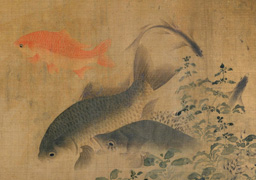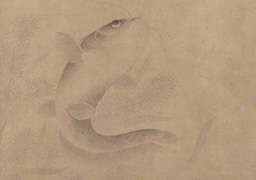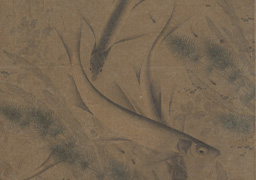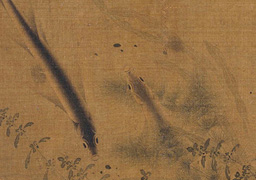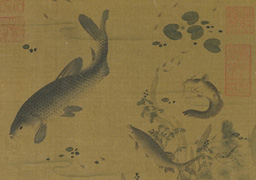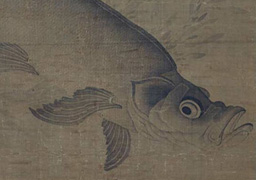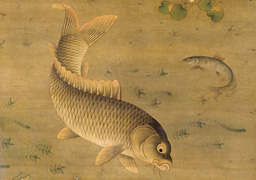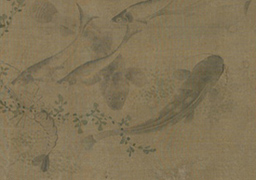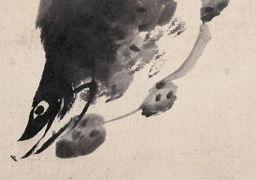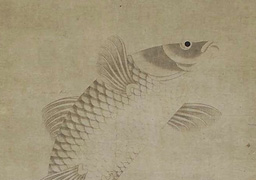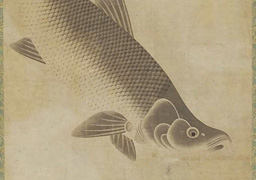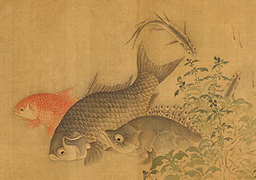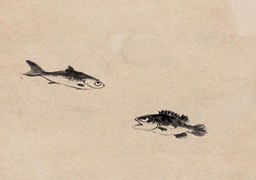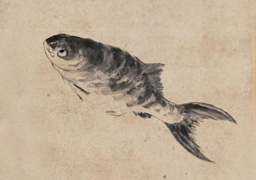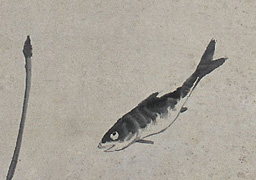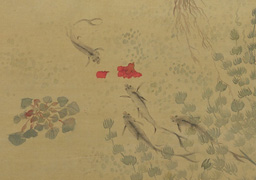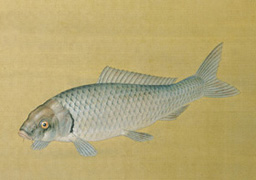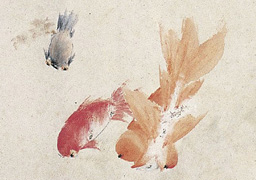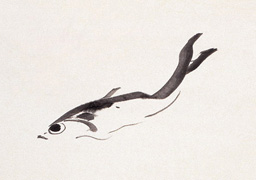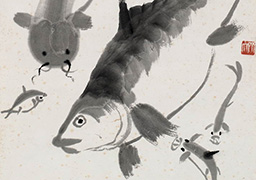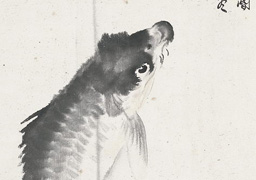Playful fish in flora-filled water became a popular subject for Chinese painters when the cultivation of rare fish came into vogue in twelfth century. Because fish (魚, yu) is homophonous with the word for abundance (余, yu), it has become a common symbol for wealth and prosperity. Paintings of fish are often used to illustrate the auspicious expression, “May there be abundance year after year (年年有余).”
Among the literati, the popularity of fish stems from the Daoist book Zhuangzi, in which Zhuangzi and Huizi debated whether one could know the happiness of fish without being one himself. The story goes like this:
Zhuangzi and Huizi were crossing the Hao River by the dam.
Zhuangzi said, "See how free the fishes leap and dart: that is their happiness."
Huizi replied, "Since you are not a fish, how do you know what makes fishes happy?"
Zhuangzi said, "Since you are not I, how can you possibly know that I do not know what makes fishes happy?"
Huizi argued, "If I, not being you, cannot know what you know, it
follows that you, not being a fish, cannot know what they know. The
argument is complete!"
Zhuangzi said, "Wait a minute! Let us get back to the original
question. What you asked me was 'How do you know what makes fishes
happy?' From the terms of your question, you evidently know I know what
makes fishes happy.
"I know the joy of fishes in the river through my own joy, as I go walking along the same river."
Based on translation by Thomas Merton, The Way of Zhuang Tzu, New Directions Books, 1965
莊子與惠子遊於濠梁之上。莊子曰:「儵魚出遊從容,是魚樂也。」惠子曰:「子非魚,安知魚之樂?」莊子曰:「子非我,安知我不知魚之樂?」惠子曰:「我非子,固不知子矣;子固非魚也,子之不知魚之樂全矣。」莊子曰:「請循其本。子曰『汝安知魚樂』云者,既已知吾知之而問我,我知之濠上也。」
Fish Painting Gallery
